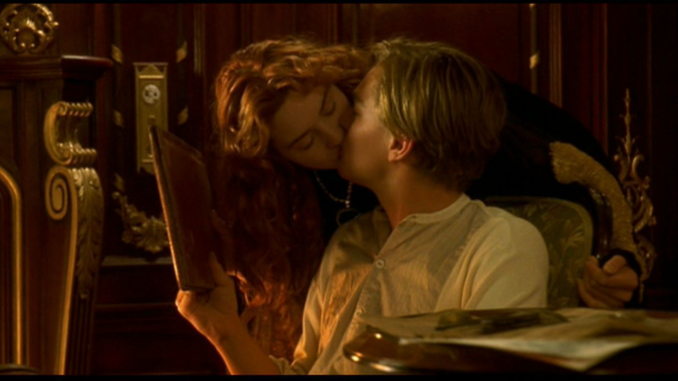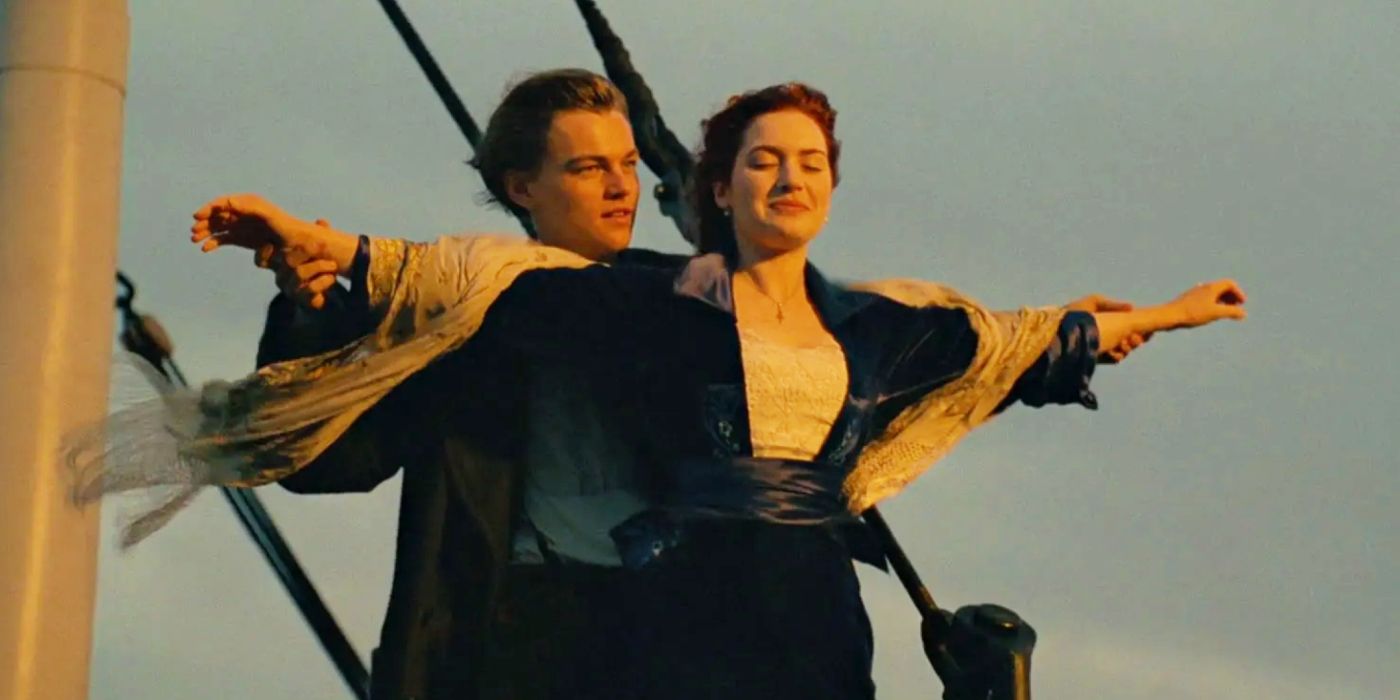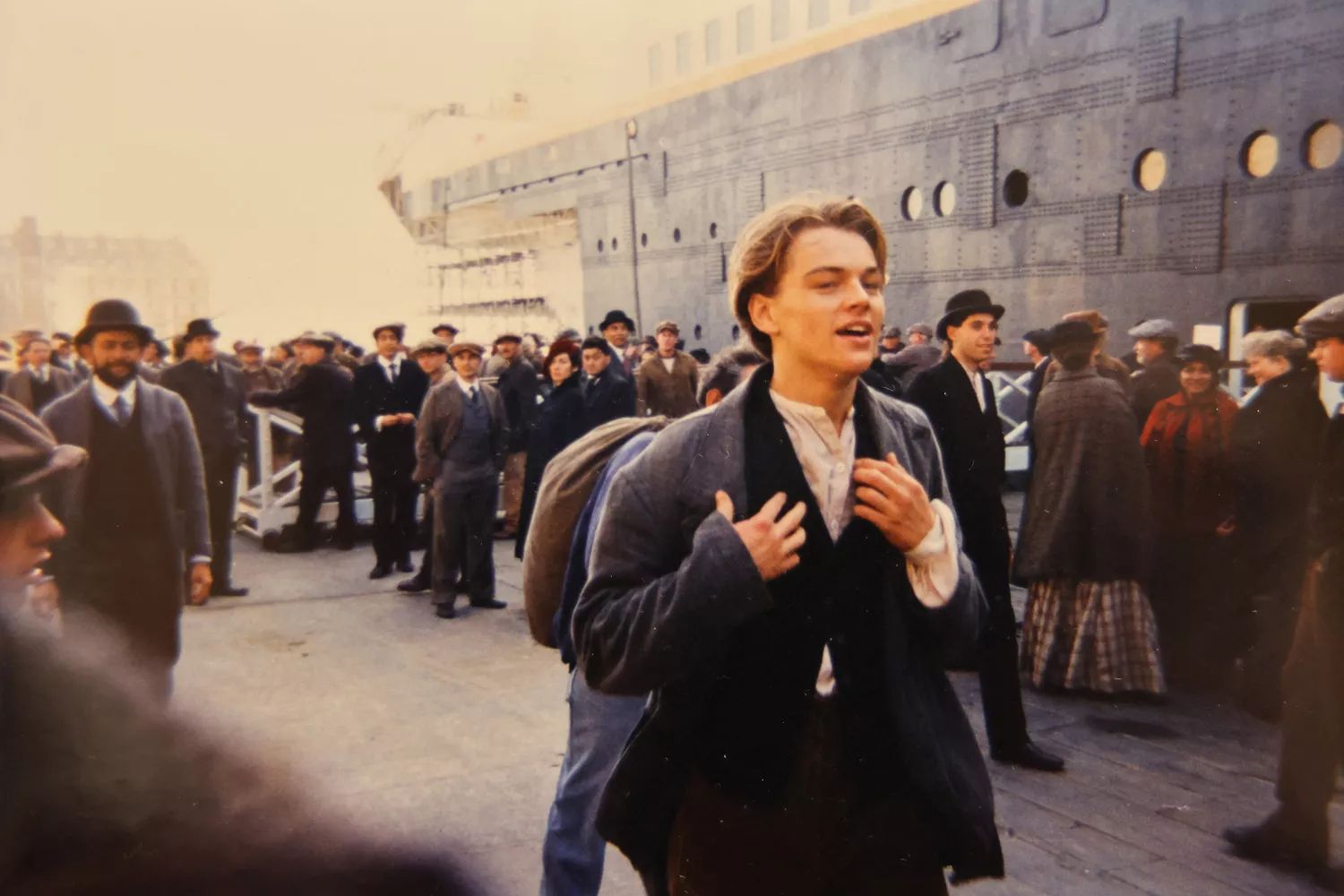
James Cameron Explains Technical Error In Titanic’s Iconic Scene With Rose & Jack
Titanic director James Cameron explains the surprising technical error in Rose and Jack’s most iconic scene together. Released in 1997, Cameron’s romantic drama chronicles the love story of a young man and woman from different walks of life aboard the ill-fated 1912 voyage of the RMS Titanic. The film, which stars Kate Winslet and Leonardo DiCaprio, features a handful of memorable scenes, but none more so than Jack and Rose standing at the bow of the ship as she remarks in wonder, “I’m flying!”
In a featurette from the recent Titanic 4K Blu-ray release (via EW) Cameron reveals that this iconic scene between Jack and Rose actually features an obvious technical mistake in the form of some out of focus footage. Cameron was set on capturing the scene during a real sunset, which meant there wasn’t time for a do-over. Check out the comments from Cameron and Winslet below:

James Cameron: “We shot two takes before we lost the light. The first one — completely out of focus. The second one is out of focus for about four seconds and then it pops in. And that’s the one that’s in the movie.”
Kate Winslet: “We did it with a real sunset. Which was hilarious because Jim would be like, ‘Sunset’s amazing — go, go go!’ And we’d be like, ‘What?’ and suddenly, Leo and I are having to basically climb up this forklift, extended, protracted thing and climb up this damn ladder. ‘We’re going to miss it, we’re going to miss it.’ So we’d get up there and suddenly, we’d go, ‘Oh, action.’ And we’d have like two minutes of us just endlessly doing this clinch. God forbid if we started laughing. It was really, honestly hilarious.”
Titanic’s Production Was Groundbreaking
Although the most iconic scene of the film features some accidentally blurry camera footage, there’s no denying that Titanic was – and is – a technical marvel. Cameron has always been a pioneer when it comes to VFX, for example, and the 1997 film is no exception. During the late ’90s, VFX were not nearly as advanced as they are now, and yet Cameron’s film manages to use digital effects to recreate the ship and its crew during a number of different sequences.

While the film’s early VFX work is impressive, the practical filmmaking involved is equally so. For Titanic’s climactic sinking sequence, for example, massive portions of the ship were built from scratch, with water-filled soundstages in Baja, California, serving as a backdrop for much of the action. A full-sized ship replica was put on a gimble so that it could be tilted at various angles, which helped to create the look of a massive ship sinking into the frigid waters of the North Atlantic.
Of course, the reason why Titanic still looks so good today is because it expertly blends VFX with practical effects and the use of miniatures. While Cameron probably could have reshot the Jack and Rose “I’m flying!” scene using a green screen, the real sunset makes the moment all the more special, even if it does include a few seconds of out of focus footage.
